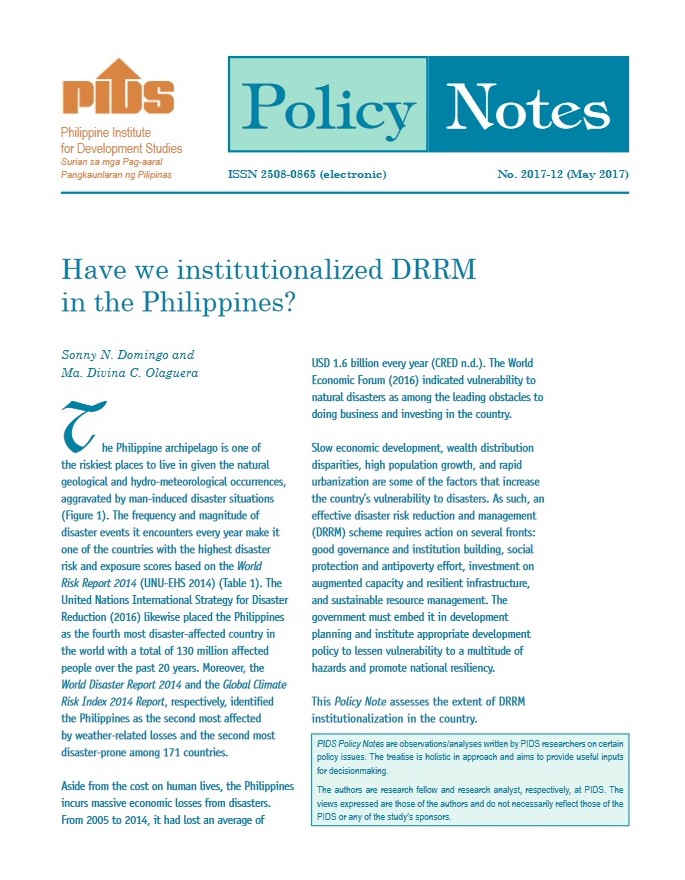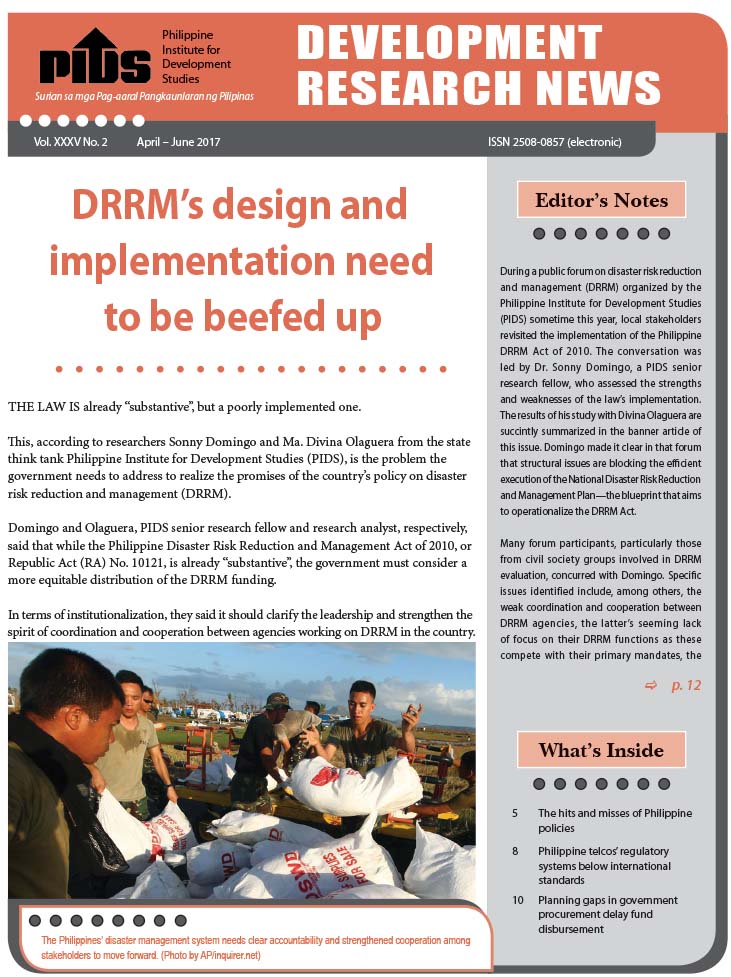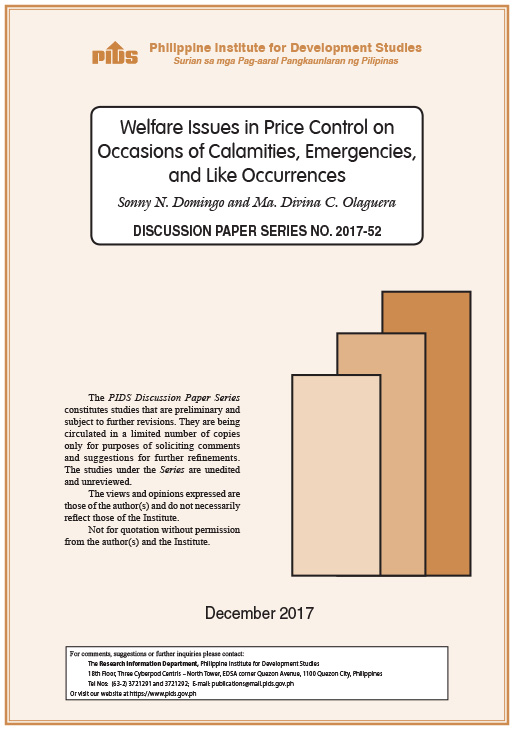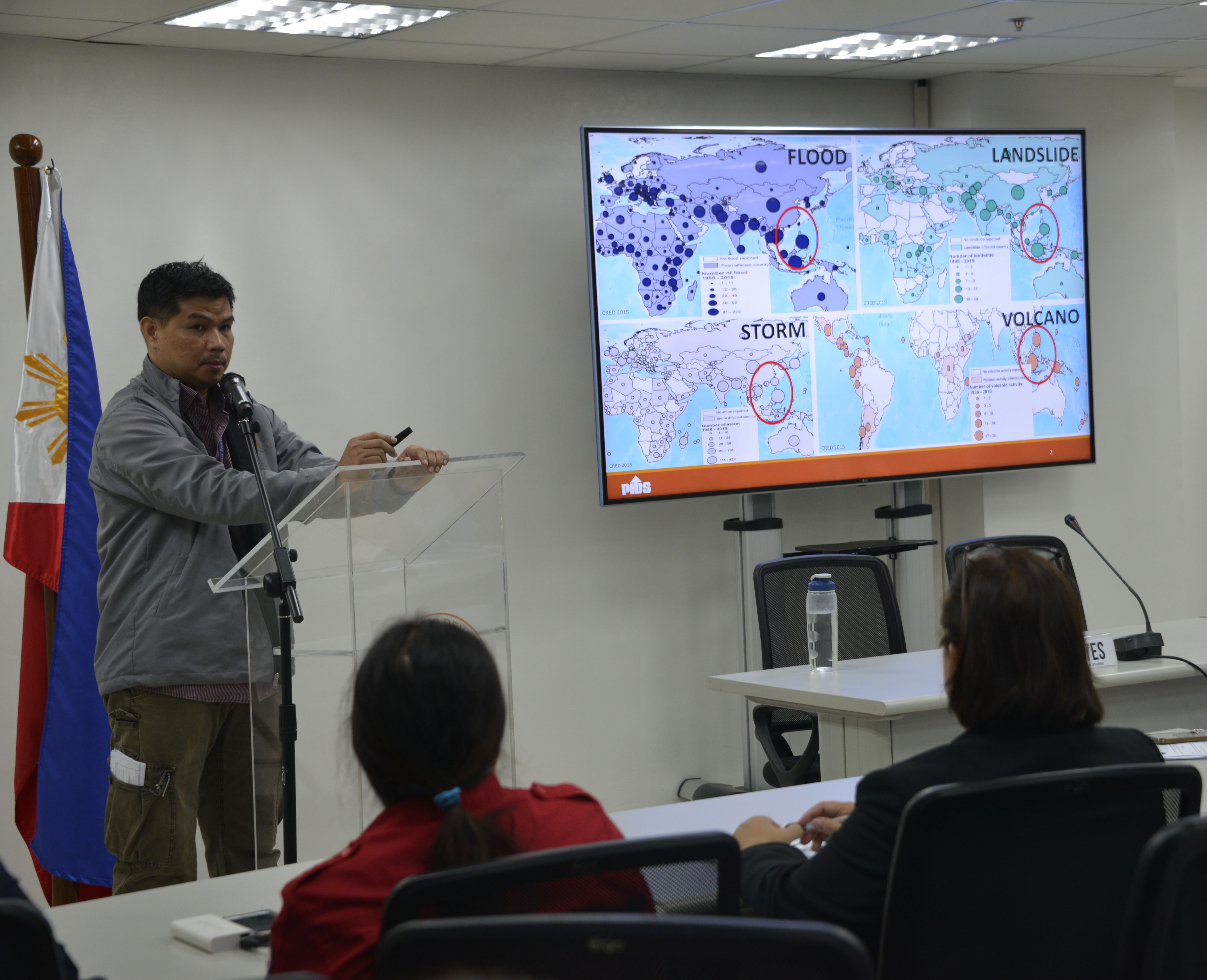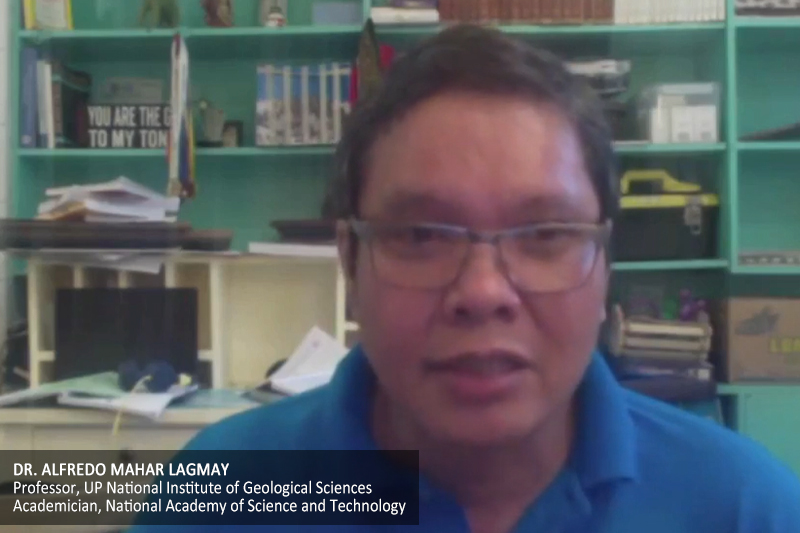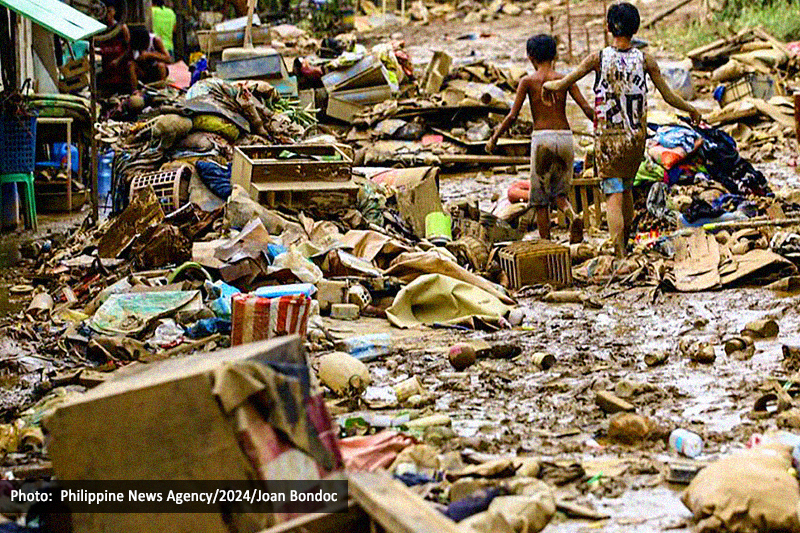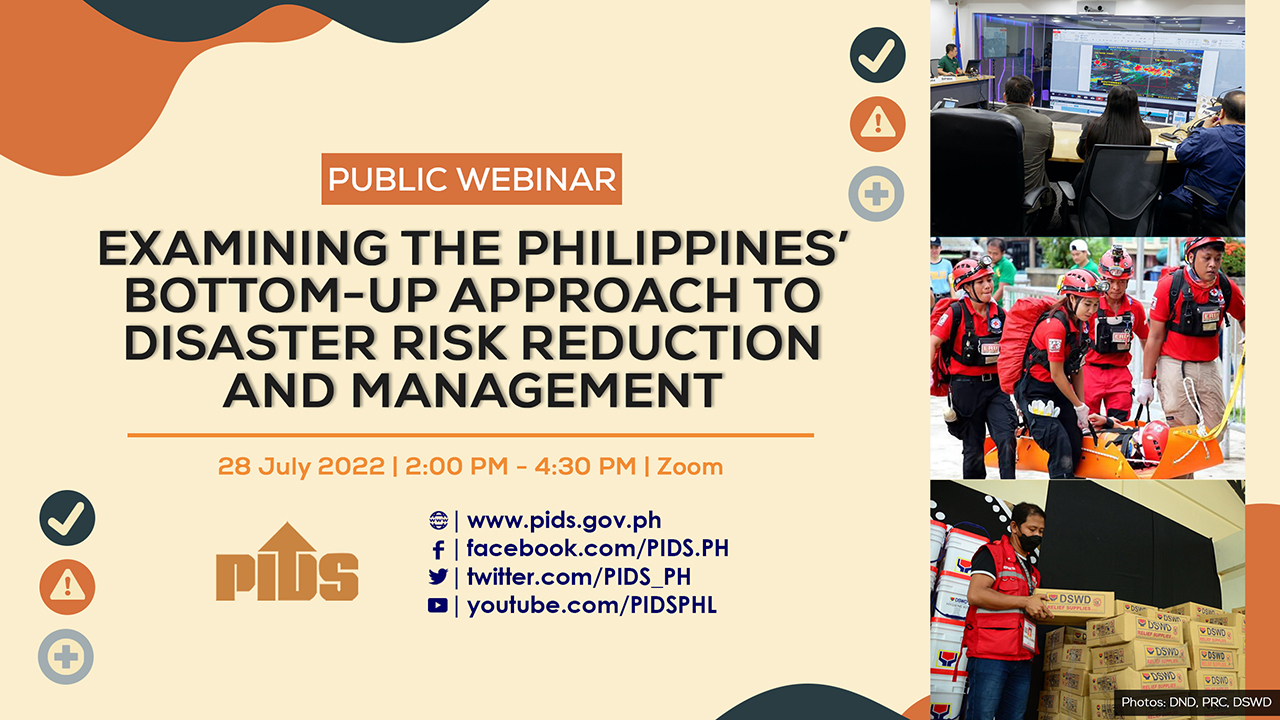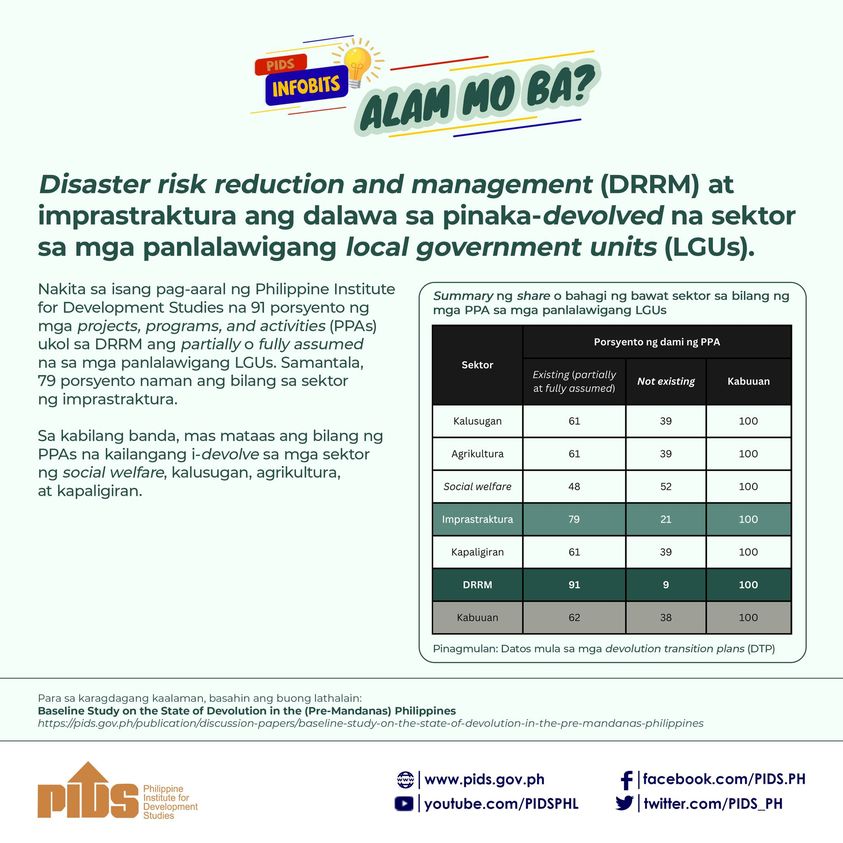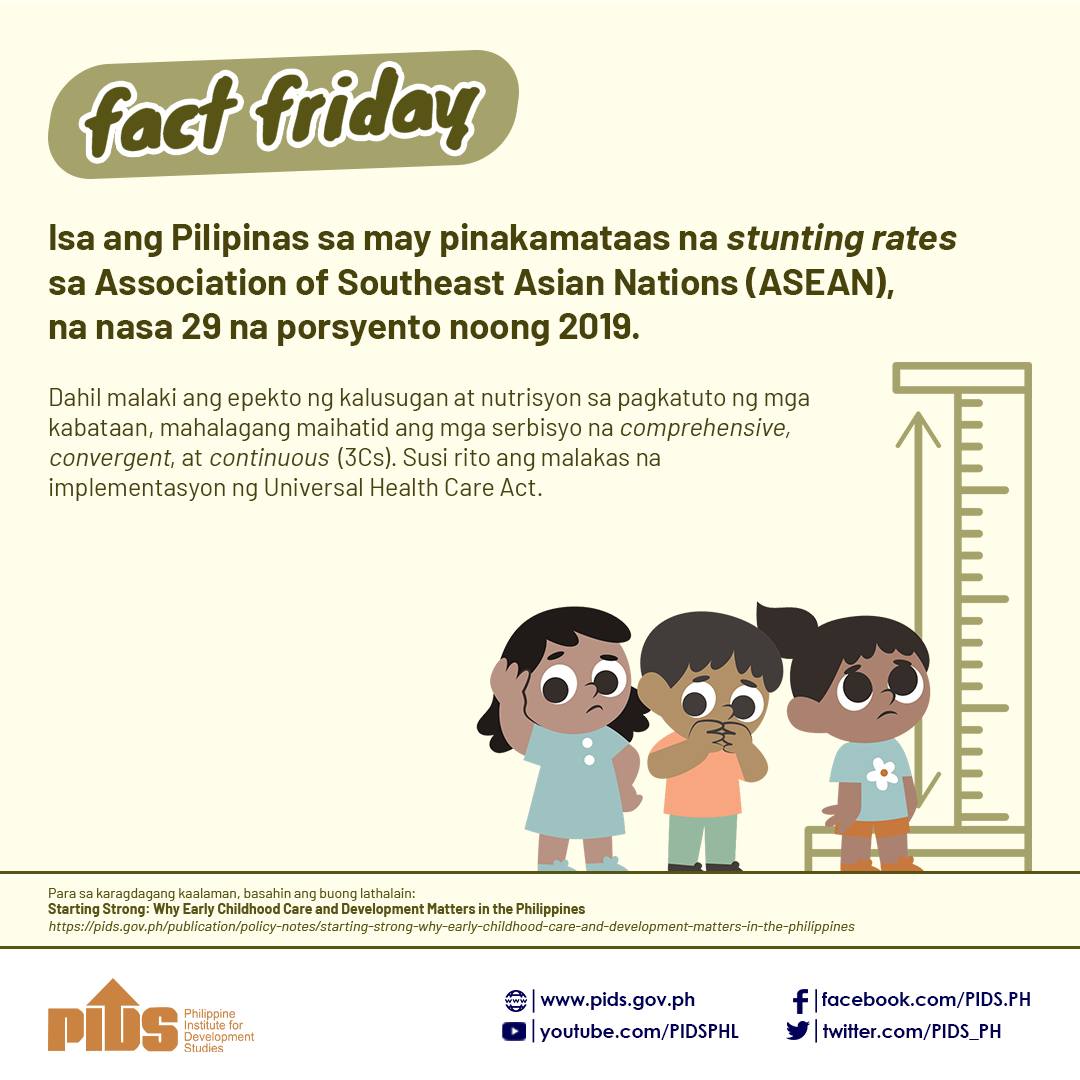Manila The Economic and Social Commission for Asia and the Pacific (ESCAP) launched its 2013 theme study Building Resilience to Natural Disasters and Major Economic Crises in Manila on August 14, with think tank Philippine Institute for Development Studies (PIDS) co-organizing the event. The launch of the study, part of ongoing efforts by ESCAP to raise awareness on the importance of resilience-building, featured prominent experts from the Philippines and international organizations. Policymakers discussed strategies on how organizations and policymakers can address the twin threats of natural disasters and economic crises in an increasingly interconnected world.
The study is particularly relevant to the Philippines, a country noted for its commitment to community-based disaster risk reduction. Policymakers have taken to heart the mantra that prevention and preparedness is far more effective, and less costly, than relief and recovery efforts. On average, from 2009 to 2011, 70 percent of the annual disaster risk reduction (DRR) budget was set aside for projects and programs that reduced the exposure of population and assets, compared to only 27 percent that was allocated to disaster response and recovery. Programs such as BRACE (Building Resilience and Awareness of Metro Manila Communities to Natural Disasters and Climate Change Impacts) strengthen community-based disaster risk management and support vulnerable families living in hazard-prone areas.
Welcoming the participants, PIDS President Gilbert Llanto underscored the importance of resistance building to inclusive growth. Resilience or the capacity to withstand, adapt to, and recover from crises is particularly important for the poor and the marginalized. When these shocks occur, they are hurt disproportionately, making them fall into poverty or slide back to poverty, overturning past efforts to make their lives better. Lack of resilience contributes to the worsening of poverty levels. It makes economic growth all the more less inclusive and makes the disparity between the rich and the poor wider.
The keynote address was delivered by the Honorable Corazon Juliano Soliman, Secretary of the Department of Social Welfare and Development, who highlighted that, resiliency is not only the work of an individual or of just a single agency. In reality, resiliency comes from and nurtured by the convergence of efforts of the people, government, civil society groups, and other sectors. This is because the shocks that we experience are not just typical shocks, they have adverse impacts on the economic, social, and psychological aspects of peoples lives.
Secretary Soliman also remarked that, regional integration against climate change is important as it will build synergy for a regional social protection fund. For example, ASEAN provided additional assistance and relief when the country was hit by typhoon Pablo.
Dr. Shamika Sirimanne, Director of the ICT and Disaster Risk Reduction Division of ESCAP, and team leader of the study, presented the main findings. Multiple shocks in Asia and the Pacific are converging in new ways that demand more comprehensive and systemic approaches to building resilience. A single incident, which might once have been localized and managed in isolation, now has multiple and interrelated regional and global consequences. This calls for new economic frameworks. Policy solutions must balance short-term economic stability with long-term development, she noted.
Dr. Sirimanne added that disaster risk reduction is extremely important for inclusive and sustainable development, and is a key component of strengthening regional resilience. She reminded audience members and journalists in attendance: First and foremost, governments must invest in prevention and preparedness.and do more to protect the poor and vulnerable groups. Local communities need to be empowered because they are at the forefront of recovery efforts.
All the panelists highlighted the importance of protecting the poor and vulnerable groups during natural disasters and economic crises.
Geo-hazard maps are useful, but they should be incorporated with socioeconomic information to identify sectors and people affected by the calamity. This will help determine how many children and women need to be relocated and how many senior citizens and persons with disabilities need to be assisted, Dr. Celia Reyes, Senior Research Fellow at PIDS.
Dr. Vinod Thomas, Director-General of Independent Evaluation at the Asian Development Bank, emphasized a critical point: Prevention is critically important and, therefore, preparedness and investments in disaster risk reduction must be prioritized. He noted that in the Philippines, disaster preparedness is underemphasized compared to disaster response. In recent years, however, efforts have increased to correct this imbalance, yielding good results. Effective prevention and evacuation did help lessen the number of deaths of typhoon Pablo in Cagayan de Oro, Mindanao, last year, which accounted for one death case and conspicuously much lower than the 674 deaths of typhoon Sendong in 2011, Dr. Thomas said.
Meanwhile, Mr. Jose Luis Oquiena, Executive Director of the Gawad Kalinga Community Development Foundation, highlighted the important role of local communities and local governments. Preparedness is all about having an organized community, and organizing a community is essential to get people prepared when a disaster occurs. Based on his long experience working with poor communities in the Philippines, he noted that, it is a big challenge to convince evacuees to be relocated. Their usual response is it is not needed because their life lies in Gods hands. Forced relocation disrupts the continuity of peoples lives. To convince them, relocation sites must be made more productive wherein people are not only provided with shelter but also a source of sustainable livelihood or income, Mr. Oquiena said.
Undersecretary Jude Esguerra III of the National Anti-Poverty Commission added that, the challenge of the Department of Interior and Local Government is to help localities come up with action plans for disaster risk reduction. He identified 20 provinces in the country with the highest number of poor households exposed to high risk of flooding and landslides.
In her concluding remarks, Dr. Luiza Carvalho, United Nations Resident Coordinator and United Nations Development Programme Resident Representative for the Philippines, noted the important role of regional cooperation in building resilience to multiples shocks: The coordinated planning, convergence, and synergy of efforts with our partners at the local, national, regional, and even global levels is needed to promote exchange cooperation and to develop resilience collectively. By working together, we can produce solutions that are far greater than the sum of individual country responses, she emphasized.
The study is particularly relevant to the Philippines, a country noted for its commitment to community-based disaster risk reduction. Policymakers have taken to heart the mantra that prevention and preparedness is far more effective, and less costly, than relief and recovery efforts. On average, from 2009 to 2011, 70 percent of the annual disaster risk reduction (DRR) budget was set aside for projects and programs that reduced the exposure of population and assets, compared to only 27 percent that was allocated to disaster response and recovery. Programs such as BRACE (Building Resilience and Awareness of Metro Manila Communities to Natural Disasters and Climate Change Impacts) strengthen community-based disaster risk management and support vulnerable families living in hazard-prone areas.
Welcoming the participants, PIDS President Gilbert Llanto underscored the importance of resistance building to inclusive growth. Resilience or the capacity to withstand, adapt to, and recover from crises is particularly important for the poor and the marginalized. When these shocks occur, they are hurt disproportionately, making them fall into poverty or slide back to poverty, overturning past efforts to make their lives better. Lack of resilience contributes to the worsening of poverty levels. It makes economic growth all the more less inclusive and makes the disparity between the rich and the poor wider.
The keynote address was delivered by the Honorable Corazon Juliano Soliman, Secretary of the Department of Social Welfare and Development, who highlighted that, resiliency is not only the work of an individual or of just a single agency. In reality, resiliency comes from and nurtured by the convergence of efforts of the people, government, civil society groups, and other sectors. This is because the shocks that we experience are not just typical shocks, they have adverse impacts on the economic, social, and psychological aspects of peoples lives.
Secretary Soliman also remarked that, regional integration against climate change is important as it will build synergy for a regional social protection fund. For example, ASEAN provided additional assistance and relief when the country was hit by typhoon Pablo.
Dr. Shamika Sirimanne, Director of the ICT and Disaster Risk Reduction Division of ESCAP, and team leader of the study, presented the main findings. Multiple shocks in Asia and the Pacific are converging in new ways that demand more comprehensive and systemic approaches to building resilience. A single incident, which might once have been localized and managed in isolation, now has multiple and interrelated regional and global consequences. This calls for new economic frameworks. Policy solutions must balance short-term economic stability with long-term development, she noted.
Dr. Sirimanne added that disaster risk reduction is extremely important for inclusive and sustainable development, and is a key component of strengthening regional resilience. She reminded audience members and journalists in attendance: First and foremost, governments must invest in prevention and preparedness.and do more to protect the poor and vulnerable groups. Local communities need to be empowered because they are at the forefront of recovery efforts.
All the panelists highlighted the importance of protecting the poor and vulnerable groups during natural disasters and economic crises.
Geo-hazard maps are useful, but they should be incorporated with socioeconomic information to identify sectors and people affected by the calamity. This will help determine how many children and women need to be relocated and how many senior citizens and persons with disabilities need to be assisted, Dr. Celia Reyes, Senior Research Fellow at PIDS.
Dr. Vinod Thomas, Director-General of Independent Evaluation at the Asian Development Bank, emphasized a critical point: Prevention is critically important and, therefore, preparedness and investments in disaster risk reduction must be prioritized. He noted that in the Philippines, disaster preparedness is underemphasized compared to disaster response. In recent years, however, efforts have increased to correct this imbalance, yielding good results. Effective prevention and evacuation did help lessen the number of deaths of typhoon Pablo in Cagayan de Oro, Mindanao, last year, which accounted for one death case and conspicuously much lower than the 674 deaths of typhoon Sendong in 2011, Dr. Thomas said.
Meanwhile, Mr. Jose Luis Oquiena, Executive Director of the Gawad Kalinga Community Development Foundation, highlighted the important role of local communities and local governments. Preparedness is all about having an organized community, and organizing a community is essential to get people prepared when a disaster occurs. Based on his long experience working with poor communities in the Philippines, he noted that, it is a big challenge to convince evacuees to be relocated. Their usual response is it is not needed because their life lies in Gods hands. Forced relocation disrupts the continuity of peoples lives. To convince them, relocation sites must be made more productive wherein people are not only provided with shelter but also a source of sustainable livelihood or income, Mr. Oquiena said.
Undersecretary Jude Esguerra III of the National Anti-Poverty Commission added that, the challenge of the Department of Interior and Local Government is to help localities come up with action plans for disaster risk reduction. He identified 20 provinces in the country with the highest number of poor households exposed to high risk of flooding and landslides.
In her concluding remarks, Dr. Luiza Carvalho, United Nations Resident Coordinator and United Nations Development Programme Resident Representative for the Philippines, noted the important role of regional cooperation in building resilience to multiples shocks: The coordinated planning, convergence, and synergy of efforts with our partners at the local, national, regional, and even global levels is needed to promote exchange cooperation and to develop resilience collectively. By working together, we can produce solutions that are far greater than the sum of individual country responses, she emphasized.

